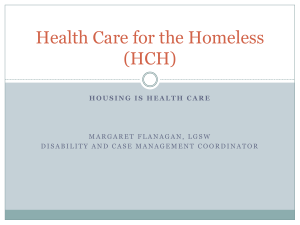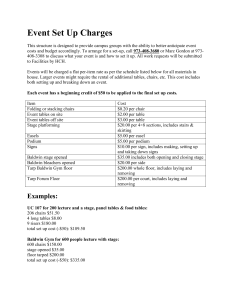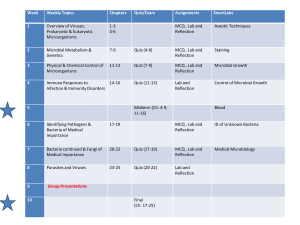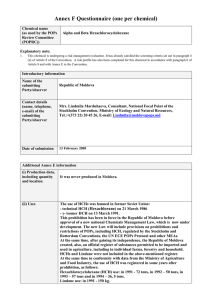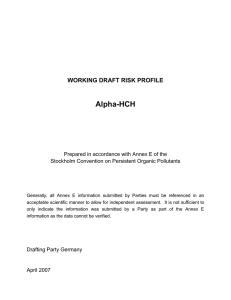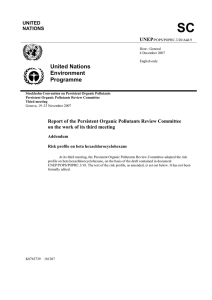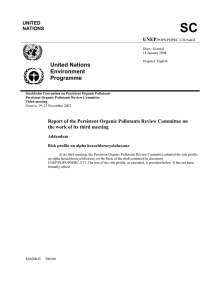Interest-Based Problem Solving for Collaborative Team Leadership John Gilvar
advertisement
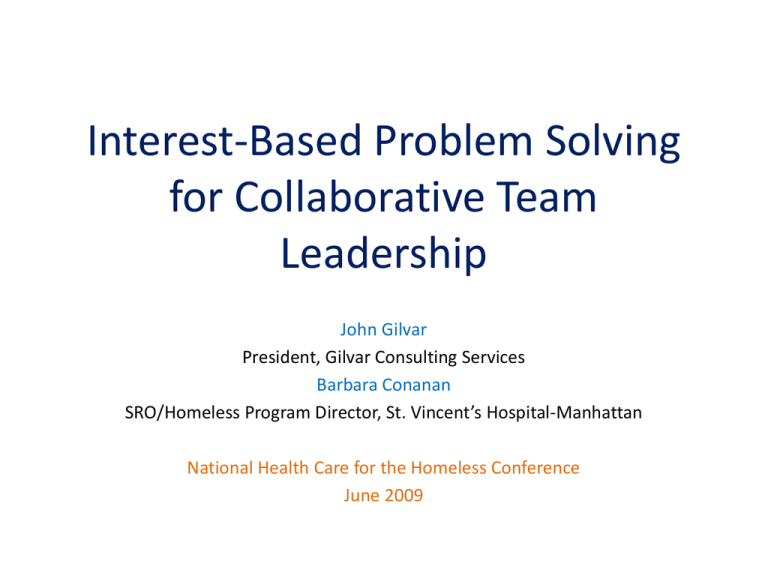
Interest-Based Problem Solving for Collaborative Team Leadership John Gilvar President, Gilvar Consulting Services Barbara Conanan SRO/Homeless Program Director, St. Vincent’s Hospital-Manhattan National Health Care for the Homeless Conference June 2009 A Team Leadership Approach to Change • Much of HCH leadership time is devoted to either creating change or adapting to it • Managing the status quo is rarely helpful or even possible • The best teams – – – – – See the whole playing field Brainstorm creative innovations Orient toward finding win-win solutions Consider the practical consequences for all team members Rarely arise spontaneously of their own accord 2 HCH Directors and other HCH leaders are by definition team leaders • Effective HCH clinical models of care are team-driven • Partnering with other agencies to form teams is critical to long-term HCH leadership success • Care • Advocacy and Resource Development • HCH leaders work to strengthen relationships within and among multiple stakeholder groups Staff Consumers Community Leaders Funders Executive Leaders Partnering agencies 3 Essential Dynamics for Effective Teams • • • • Sense of Urgency Common Vision Players feel heard, acknowledged, valued Sense of shared mission that can trump anxiety about hierarchy and power plays • Collaboration ascends as a key value proposition • Competition among competing stakeholder agendas descends as a preoccupation 4 Interest-Based Problem Solving • Uses methods and tools developed in the arena of mediation and dispute resolution to help facilitators resolve and avoid conflict among stakeholders • Keeps brainstorming oriented toward win-win solutions and creativity • Provides a constructive framework with which team leaders can facilitate collaboration in making difficult decisions or solving problems 5 Defining “Interest” • Interests are fundamental needs that underlie and drive the “positions” that stakeholders take • Interests are the goals that drive us to do the work we do, to come to work in the morning, ready to make a difference • Interests are not the personal or organizational agendas we bring to the table, but the reasons we create those agendas 6 Interests versus Positions • Position: “Hospitals must be stopped from discharging to the streets homeless patients who lack a place to recuperate and are at risk of decompensating.” • Some corresponding interests: – The well-being of vulnerable members of our community – The short-term and long-term costs to hospitals, taxpayers, and the community as a whole associated with re-admissions, more expensive treatments, and longer inpatient stays. – Retaining HCH physicians, nurses, social workers and other staff who experience intense professional frustration at seeing the clients they care for needlessly develop complications and become sicker 7 Some Typical Interests for HCH Executives • • • • Sustainability of the organization and its operations Board and community confidence and enthusiasm Staff satisfaction and retention Growth and development among the people and teams that make things go • Increased harmony and consensus • Satisfaction derived from making a difference 8 Step-by-Step Meeting Process 1. Communicate about the Issues Take the risk to open things up and invite opinions 2. Identify Interests Tease out and record the interests of all stakeholders Define the problem (decision) in terms of the interests of all Be sure to articulate and record the interests of the organization as a whole 3. Generate Options Don’t censor or edit at this point Try to stay open to “crazy ideas” 4. Evaluate Options How well do the suggested options address identified interests? Focus on overlapping interests Ensure organizational interests get their due 5. Develop a Plan for Moving Forward 9 Why focus on Interests? • The executive’s job entails one negotiation after another – Interests are much more likely to overlap than positions are (find the common ground) – Discussing overlapping interests paves the way for identifying opportunities for mutual benefit (winwin solutions) – Less time devoted to coping with conflict = more time devoted to innovating, growing, learning 10 The (Often) Missing Link • Without a structure for identifying the interests of all of the stakeholders and deliberately highlighting the areas of overlap, processes for soliciting stakeholder input often devolve into competitions between preconceived agendas – The energy of stakeholders gets spent on organizing to see their position prevail rather than on creatively brainstorming win-win solutions – The interests of the whole organization get lost in the heat of battle 11 Collaboration Facilitator and Captain of the Ship • HCH leaders can wear both hats simultaneously – As the facilitator, she or he: • leads the process of identifying overlapping interests – As the captain, she or he: • Articulates the interests of the entire organization • Focuses the energy of teams on the areas where team member (stakeholder) interests overlap with the organization’s interests 12 Interests as a Framing Tool • Leaders who can frame the reasons for their decisions in terms of the interests of the organization as a whole can better avoid “We versus Them” tugs of war • More often than not the interests of the organization as a whole significantly overlap with the interests of stakeholder camps – E.g., providers, nurses, board members, consumer advocates 13 Hierarchy is Not a 4-letter Word • Without hierarchy, who will keep the organization focused on the big picture and ensure results? • Mission • Accountability • Sustainability • But well-defined hierarchy does not obviate the need for team member buy-in 14 Interest-based Labor-Management Negotiations • The Interest-based Problem Solving Approach: – Establishes problem-solving as the first mode of engagement before there is a need for grievance or disciplinary action – Decreases recurrent grievances, incidents, issues and/or disciplinary problems – Helps identify and implement projects that improve patient care and the working environment for both Labor and Management. 15 Interests versus Positions in LaborManagement Negotiations Positions • Specific demands you make to resolve a problem • Do not explain why • Do not help the other party understand why you want what you want • Are often reactivate and override your values • A singular response to satisfy your needs and desires Interests • The reasons you want what you want • Explain why • Help the other party see things from your point of view • Responsive, based on values you want to uphold • Your needs and desires. 16 Other HCH Decision Making Applications • Locating a new service site and service model • Clinical productivity issues/conflicts • Negotiating with hospitals, mental health providers, or other health care systems • Resolving chronic or acute staff conflicts 17 Summary • Interest-Based Problem-Solving Advantages • Preserves and enhances relationships • Facilitates listening • Provides a safe space for considering a problem or conflict from all sides • Produces a greater number of and more creative options for solving challenging problems • Better buy-in to decisions made • Increased stakeholder confidence in leadership 18 Additional Resources • Getting Past No by William Ury – Published by Bantam, 1991 • Harvard Program on Negotiation – http://www.pon.harvard.edu/ 19 Contact Information John Gilvar, Gilvar Consulting Services john@gilvarconsulting.com 360-349-9719 www.gilvarconsulting.com Barbara Conanan, St Vincent’s Hospital bconanan@SVCMC.org 212-604-2705 20
